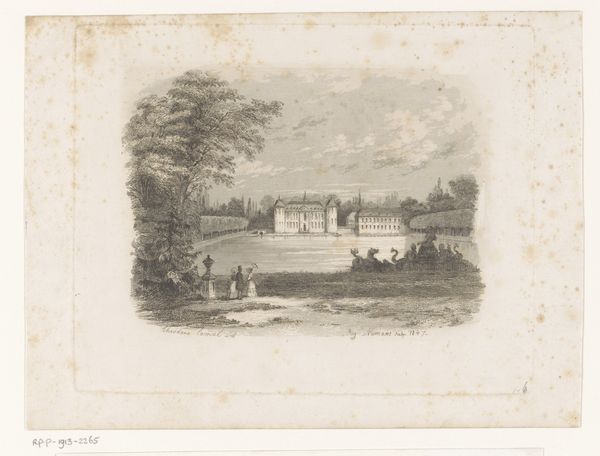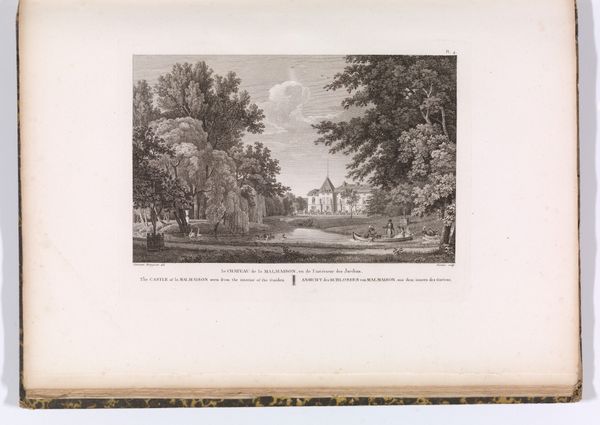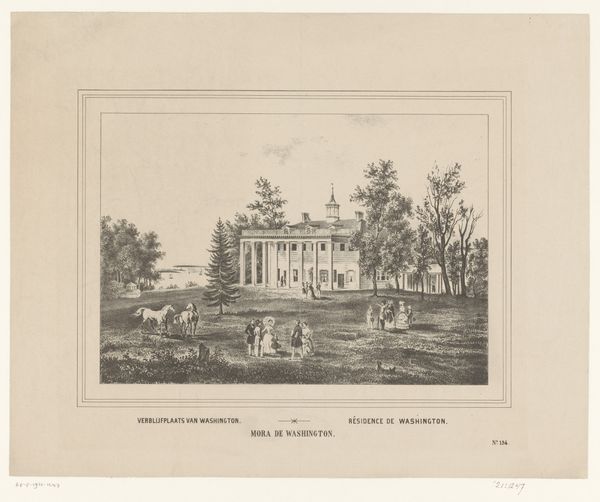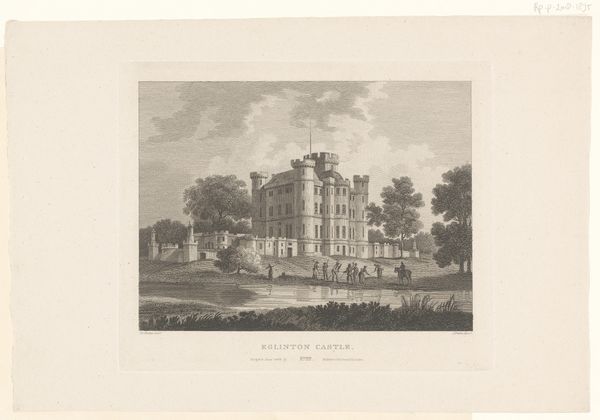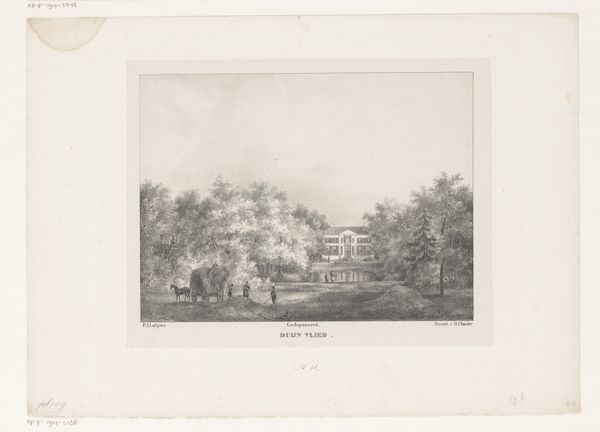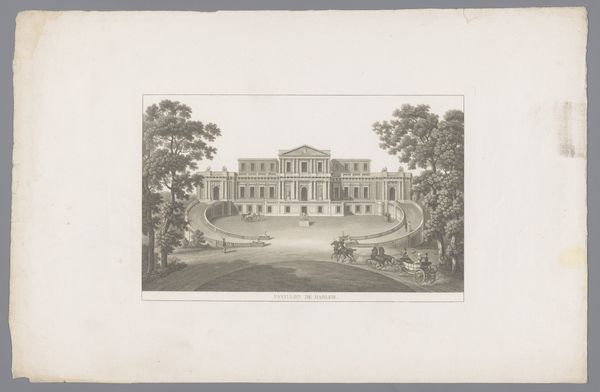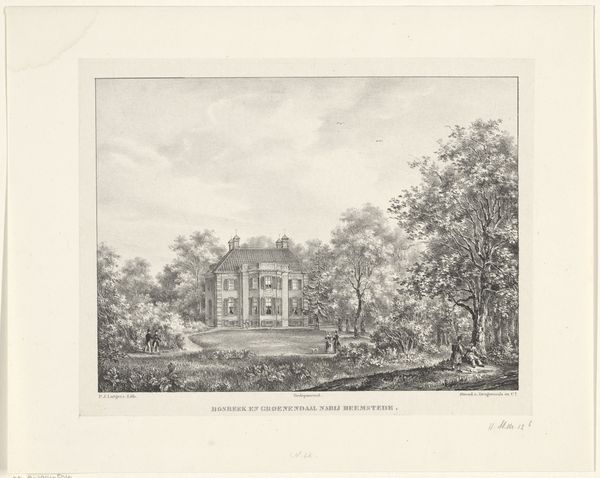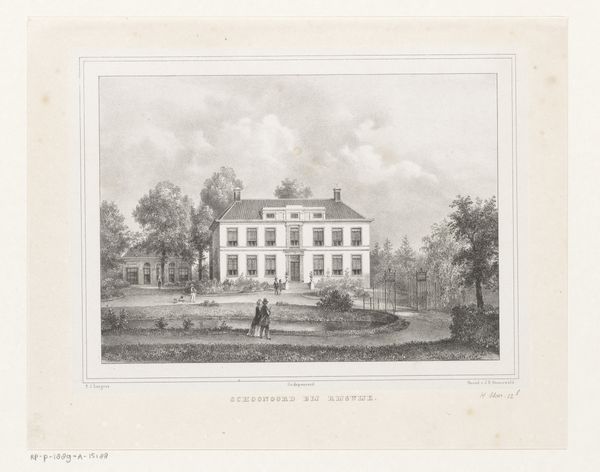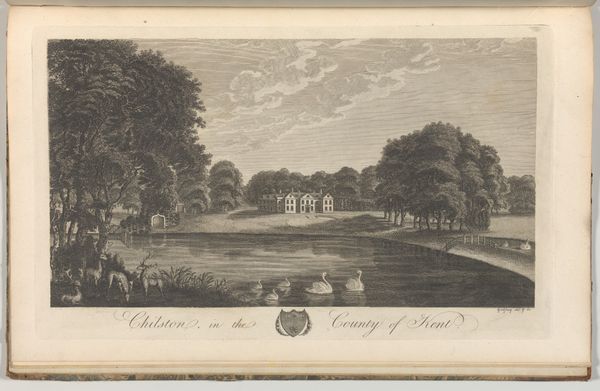
Dimensions: height 340 mm, width 480 mm
Copyright: Rijks Museum: Open Domain
Curator: This etching from between 1827 and 1907, titled "Villa Sonsbeek in Arnhem," offers a glimpse into a Neoclassical country estate, a *buitenplaats* as the Dutch would call it, now held in the Rijksmuseum collection. Editor: My immediate impression is one of tranquility, yet with a subtle commentary on societal structures—it is a bucolic image framed within a controlled, almost austere composition. There's something quietly potent in that tension. Curator: It's interesting that you notice that. The etching process itself—the controlled corrosion of the plate by acid—mirrors the imposition of order onto the natural landscape depicted here. Think about the labour that went into both the depicted groundskeeping, and the artistic making, to create the image that romanticizes it. Editor: Exactly! Consider how access to spaces like Villa Sonsbeek was undoubtedly shaped by class, race, and gender. These seemingly innocent landscapes often functioned as symbols of power and privilege, concealing the labor upon which that leisure was built. This prompts us to reflect on whose perspectives are centered and whose are marginalized in such representations. Curator: And if we examine the materiality, paper and ink seem almost deliberately chosen to present a particular image. By making this available in the form of prints it would offer an easily disseminated, though arguably sanitized version, to the bourgeoisie eager to emulate the landed gentry, to purchase into a lifestyle unavailable to most through acquisition. Editor: So true, its value goes beyond just an image. This makes me consider the implications of mass reproduction. It raises questions about ownership and representation. The ability to disseminate this image across various platforms impacts how we perceive not only the space itself, but also those associated with it. Curator: It's fascinating how deeply ingrained these material and social factors are, even in what appears at first glance to be a simple landscape. I had considered primarily how etching could also mirror the hard work, creating this controlled but effective result of what is also a laborious, repetitive and often risky activity. Editor: Ultimately, this print encourages us to investigate the interplay between visual representation, historical context, and power dynamics embedded within our world. I can’t view the scene without that perspective.
Comments
No comments
Be the first to comment and join the conversation on the ultimate creative platform.

